Nature's way of helping
Nature provides us with a number of medicinal plants that can be very helpful in treating our health and fighting against headaches. There are also a number of essential oils (mentioned in the Essential oils from A to Z box) for external use, they are extracted from botanical plants and can be used on the skin or for their aroma.
+ Headaches are generally caused by previous physical problems like high blood pressure, back tension, stress, nervous exhaustion, digestive ailments, tooth aches, visual fatigue, exposure to the sun, sinus infections, etc. The first step in treating headaches is to visit your doctor for an exact medical diagnosis and to treat the cause of the ailment. Essential oils –made from a base of herbs– can act in the form of aromatherapy as an extenuating therapy for migraines and headaches. The following plants are natural remedies that might be considered “headache” herbs. Some herbs may be more difficult to find than others, but there are a number of health food stores that may carry these remedies. In general, they are used fresh or dried or in the form of tinctures, powder and capsules.
NOTE
You should always consult your physician before starting any herbal treatment.
Betony
(Betonica officinalis)

- • Parts used. Flowers and leaves are cultivated during the end of spring until summer. They are dried in a ventilated structure and used in infusions. After the plant is dried, it gives an aromatic smell. It has a bitter taste. Betony can also be found in powder form.
- • It is native to Western and Northern Europe.
- • The plant is composed of tannins, alkaloids and glycosides; it is particularly rich in phenolic acids, such as ferulic, chlorogenic and valerianic acids. Glycosides found in plants contribute to their blood pressure controlling properties.
- • Betony is recommended for people who suffer from headaches brought on by high blood pressure. It can be used for all headache types for its soothing properties.
- • Warning. It is important to use precaution with this herb because it can cause vomiting.
Cloves
(Eugenia caryphyllata)
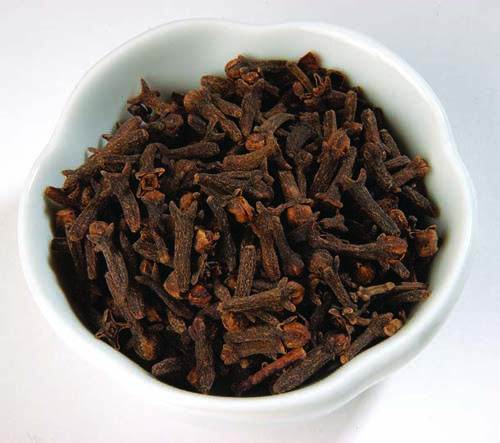
- • Parts used. The flower buds, which look like nails. The flowers grow on an evergreen tree, native to the Spice Islands and the Philippines but also grown in India, Sumatra, Jamaica, the West Indies and Brazil. In China, during the Han dynasty those who addressed the emperor were required to hold cloves in their mouths to mask bad breath. In China and India it was also used to rub on the gums to sooth toothaches. The aroma that fills the dentist's office is a derivative of an essential oil extracted from cloves, used as a natural antiseptic.
ESSENTIAL OILS FROM A TO Z

BASIL
Native to India, fortifies the nervous system and acts as a pain reliever against headaches and soothes. It is also used for mental fatigue because it is a stimulant and fights depression at the same time. Basil's inviting aroma has been used for centuries to harmonize psychological and emotional states. It's recommended using basil oil before going to bed; taking a bath with a few drops of this essential oil added. Blend with sage, geranium, lavender and neroli.
Safety. It shouldn't be used during pregnancy or during breastfeeding or on children.
WARNING
Essential oils are for external use only, they should never be ingested. Keep stored away from children and keep away from your eyes.
AROMATHERAPY

Ancient cultures have long used essential oils derived from plants for their therapeutic properties. The aromas help to energize you, contribute to sedation of attacks, stimulate the senses, calm anger and help to overcome fears or indecision. When you are stiff, with achy and tense muscles throughout the body, taking a bath with essential oils or using them during a massage can work miracles for the body. There are a number of essential oils that have properties that may be useful specifically against headaches. They can be added in massages to help clear the mind, to vapors, cold compresses to apply to the neck or tense shoulders, or to sedative blends perfect for adding to a warm soaking bath. Essential oils should be used under the supervision of a medical professional. In the following pages, we have developed a guide to the most efficient essential oils from A to Z that may work as remedies for headaches.
CALMING CLOVES
To help relieve headaches, nothing is better than an infusion prepared with 3 cloves and I cup of boiling water. Allow to steep, cool slightly and drink.
- • Cloves can be used to make infusions for rubbings, washing or gargles, used as essential oils, capsules, tinctures or added to ointments.
- • Cloves carry potent antibacterial, anti-inflammatory, and pain relieving actions. They also work to prevent scarring. They are especially effective in relieving headaches brought on by toothaches and dental problems.
- • Warning. It's not recommended for patients who suffer from gastritis, gastric-duodenal ulcers, irritable bowel syndrome, colitis ulcers and some neurological illnesses.
Dandelion
(Taraxacum officinale)
- • Parts used. The leaves and roots, which are prepared in infusions and decoctions.
- • Native to Europe and Asia, today it is cultivated throughout the world. The scientific name comes from the Greek word taraxos (disorder) and aka (remedy). The plant's flowers are bright yellow, and grow wild around the borders of cultivated land.
- • The leaves are a rich source of potassium, which is interesting since the leaves are used for their diuretic action. Because of the leaves’ diuretic and detoxifying action they are recommended for excess tension that may provoke headaches and other ailments. In China, dandelion root was used to treat liver, gallbladder, kidney, and joint problems. In some countries, dandelion is considered a blood purifier and used to treat water retention, and diseases of the liver. Because it may help to purify the liver, it may help to relieve headaches caused by excessive rich foods or alcohol.
- • Warning. In cases of stomach ulcer or gastritis, dandelion should be used cautiously, as it may cause overproduction of stomach acid. In this case dandelion should be used after meals. Over dosage of dandelion can bring on slight diarrhea.

ESSENTIAL OILS FROM A TO Z
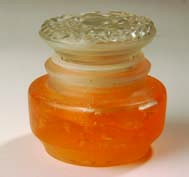
BERGAMOT
This oil, with its fresh, citric, almost floral aroma, is good for headaches caused by stress and mental fatigue. It may also help for cases of depression. It is used in massages and baths.
Safety. This oil increases the skin's sensitivity to sunlight, which you should avoid after using it.
CINNAMON
Warm, sweet, spicy and inviting aroma. This oil may be used against headaches.
Safety. You should always buy essential oil made from cinnamon tree's leaves, because if made from the bark it can irritate the skin. The oil made from the tree's leaves is so potent that it should be used in low doses.
NATURAL SEDATIVE
Boil mad-dog skullcap flowers and leaves for 5 minutes. Allow to steep and drink 1 cup, 3 times a day. In a tincture, you may take up to 40 drops in 1 glass of water, 3 times a day.
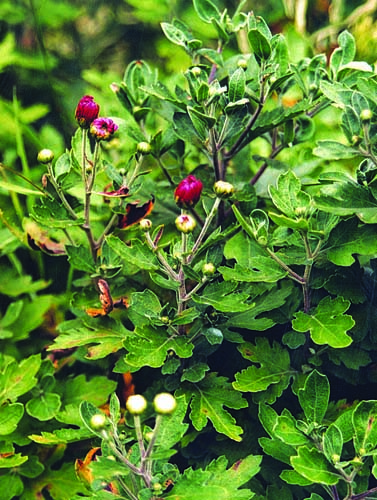

Mad-dog skullcap
(Scutellaria lateriflora)
- • Parts used. The entire plant is used to prepare infusions or to make tinctures.
- • It is also known as the Virginian skullcap, because it grows abundantly in Virginia, USA. The Cherokee Indians used this plant to relieve headaches brought on by premenstrual discomforts.
- • Its active components (scutellarin, a flavonoid glycoside and many other flavones) act on the nervous system.
- • Has sedative and calming properties, which may be effective for headaches brought on by tension. In general this plant may help to treat and fortify an over-stimulated nervous system. This plant is highly recommended for migraines, alone or combined with other plants such as lavender and passion flower.
CALMING DROPS OF LAVENDER
For headaches, take 1½ teaspoons of lavender tincture diluted in a glass of water before going to bed. You can also add a few cups of lavender infusion or essential oil to a bathtub before going to bed to relieve stress and tension.
Lavender
(Lavandula officinalis)
- • Parts used. Flowers and leaves to prepare in infusions or to make essential oils and tinctures.
- • The ancient Romans used lavender to perfume water. This plant was introduced to England around 1560 and was taken to the Americas by the first colonists.
- • It grows wild in its native Mediterranean, and was used by ancient cultures to fight headaches and exhaustion. In addition, it leaves a lovely, floral scent.
- • Today, lavender is used against headaches, depression and insomnia. This plant has calming and relaxing properties.
AROMATIC AND BENEFICIAL TEA
To help fight headaches, prepare an infusion with 1 teaspoon of dried lavender added to 1 cup of boiling water. Allow to steep for 5 minutes, drain and drink.
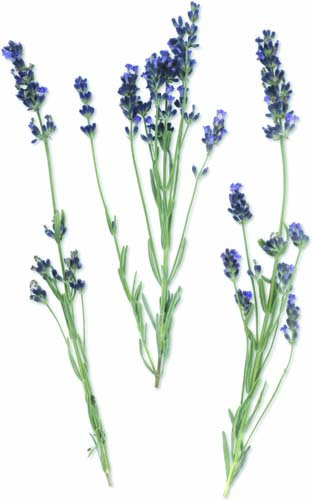
ESSENTIAL OILS FROM A TO Z
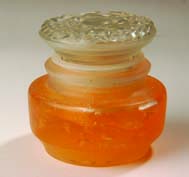
FENNEL
Fresh, green and herbal aroma. This essential oil might help to counteract headaches caused by colds and flu. Blends well with thyme.
Safety. Should not be used on pregnant women, children and people who suffer from epilepsy.
GERANIUM
This oil has a floral, earthy, sweet, soft and dry aroma. It may work as an efficient remedy against the anxiety that accompanies headaches. Blends well with rose, sandalwood, sweet marjoram and lavender.
Safety. Shouldn't be used during pregnancy.
Roman camomile
(Chamaemelum nobile)
- • Parts used. The flowers are used to make infusions.
- • It is popularly known as “garden camomile.” Also called camomile, derived from the Greek word kamai (in the earth) and melon (apple).
- • Camomile was one of the first herbs taken by European colonists to the New World. In the middle of the XVII century, by religious order in Quebec, it was used as an herbal medicine for various ailments.
- • The active ingredients chamazulene, alpha-bisabolol, alpha-bisabolol oxides A & B, apigenin, luteolin, and quercetin have relaxing properties for the nervous system.
- • Recommended for fighting headaches and can be used for colds and respiratory problems.

YELLOW INFUSION
For a remedy that may help to relieve headache add hot water at boiling point to Roman camomile flowers in a bowl. Make sure to cover the preparation so that it doesn't lose the curing properties in the steam. This infusion can be added to baths, to relax adults and little ones.

Camomile
(Chamomilla recutita)
- • Parts used. The flowers are used in infusions and also used to make essential oils.
- • Also known as “German camomile” or “wild camomile”, has more potent properties than Roman camomile or garden camomile.
- • This plant has a less bitter flavor than the Roman species. Both varieties grow abundantly in Europe.
- • It is recommended, along with ginger, for migraines and motion sickness caused by traveling. Because of its sedative virtues, it helps to relieve stress. Its antispasmodic properties relieve headaches caused by excess tension. It is also recommended for problems related to tired vision.
RELAXING CAMOMILE
This infusion of German camomile may help to relieve stress and headaches brought on by certain nervous disorders. Place a generous amount of flowers in a cup and add hot water at boiling point. It's recommended drinking 2 tablespoons 3 time per day.
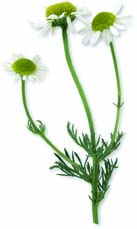
FENNEL AROMATHERAPY
Essential oil of fennel can be used in massages and compresses to help relieve headaches caused by colds and flu. Mix 1 teaspoon of essential oil to 1 tablespoon with a neutral oil and apply to the temples and between the eyebrows.
ESSENTIAL OILS FROM A TO Z

GINGER
Warm and spicy aroma. This oil is known for its beneficial effects in soothing migraines and nausea caused by motion sickness and other digestive disorders.
Safety. Ginger tends to increase the body's temperature, and can cause discomfort to women who are suffering from hot flashes during menopause.
JUNIPER
Fresh, clean perfume, with a touch of wood. Juniper is a cleansing, purifying and detoxifying oil. Ideal for treating headaches caused by stressful situations, poor diet or excessive use of alcohol.
Safety. Juniper should not be used on pregnant women.
HOT TEA TO CLEAR THE MIND
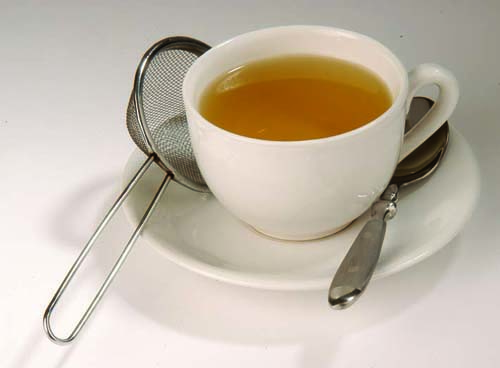
Boil lemon balm flowers in water for 5 minutes, strain and allow to steep. Mix with honey and drink up to 3 cups daily. After 2 or 3 days you might notice positive results.
Lemon balm
(Melissa officinalis)
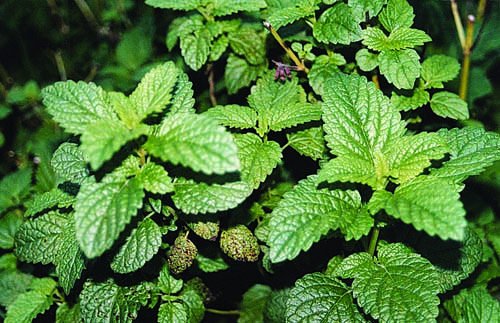
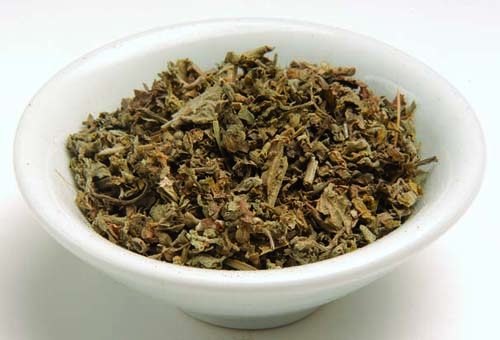
- • Parts used. The leaves and flowers are used dried or fresh to prepare infusions.
- • The scientific name in Greek, means “bee”, making reference to the attraction this insect has to this plant.
- • Native to Southern Europe, Western Asia and North Africa, although today it is grown throughout the world.
- • This plant's properties tend to have relaxing effects and to act on the nervous system. Studies have shown that lemon balm leaves carry properties that calm the central nervous system and soothe headaches brought on by tension. Currently, it is used against anxiety, slight depression and irritability.
- • Warning. Lemon balm may inhibit the function of the thyroid gland, and presents side effects for patients suffering from underactive thyroid glands. People with normal thyroid gland function, can take lemon balm without any side effects.
GREEN SALAD TO FIGHT PAIN
Pick fresh mint and wash the leaves thoroughly with cold water. Mix with fresh sliced tomatoes and dress with olive oil, apple cider vinegar and sea salt.
Mint
(Menthax piperita)
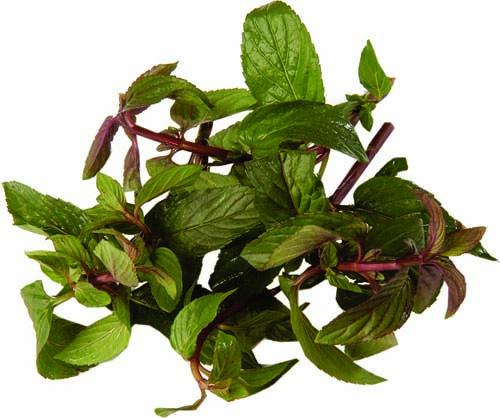
- • Parts used. The leaves are used to prepare infusions and to make essential oils.
- • The ancient Egyptians used mint for a number of medicinal remedies, especially for headaches and stomach aches. In Greece, Hypocrates considered mint a strong aphrodisiac. Plinius applauded this plant for its pain relieving power and recommended using a crown of mint to increase the mind's power.
- • Today, this plant is used to treat a number of ailments (headaches, dizziness) caused by excessive food. It is also recommended for recovering strength lost during fatigue and stress. It can be used to clear a clouded mind.
- • Warning. It is not recommended for gallstones.
BATH WITH ESSENTIAL OIL OF LAVENDER
To help relieve headaches it is recommended to add a few drops of essential oil of lavender to a bowl with water and moisten a washcloth. Apply the compress to the forehead.
ESSENTIAL OILS FROM A TO Z

LAVENDER
This is one of the most versatile essential oils, that has a number of uses. It may be very effective in fighting headaches, relieving tension and bringing on sleep. For its calming and relaxing properties it can be used all over the body and for specific muscular ailments. It can also be used in creams.
Safety. Lavender oil should never be ingested or added to a baby's bath. The baby may drink the water.
HERB LUISA
Has a lemon, lime aroma, which is very relaxing. Adding this essential oil to massages may be an excellent way to tone the nerves and to counteract headaches. It can also be added to a bath, which has a similar tranquilizing effect.
ORANGE JUICE

Juice 2 oranges and add black sugar or honey. Drinking orange juice at breakfast to complement a complete, balanced meal can help to prevent headaches, especially those caused by colds and other respiratory ailments.
Bitter orange
(Citrus aurantium)
- • Parts used. Fruit and skin.
- • In China this fruit is used (ripe or green) for medical treatments, although the un-ripened bitter orange is more potent than the ripe fruit. It is used to balance the nervous system and against insomnia. This fruit's skin is extracted when the fruit is fresh and then dried. In the Middle Ages, this was one of the favorite plants among Arabic doctors.
- • Its components –vitamins A, B and C, flavonoids and bitter principles– carry sedative and anti-depressant properties. This fruit also stimulates digestion, and helps to fight against constipation.
- • Warning. These fruits should be used with caution during pregnancy because they can induce labor contractions.
Rosemary
(Rosmarinus officinalis)
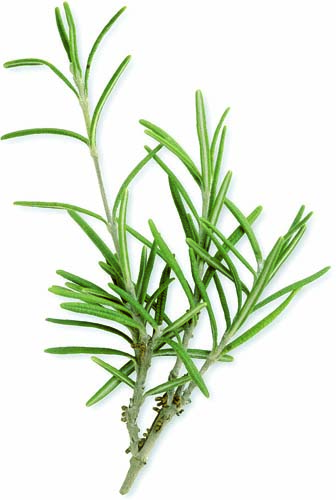
- • Parts used. The leaves are used in infusions and to make essential oils.
- • Robust perennial, with thin, rigid leaves. Rosemary is considered to be the herb of fidelity.
- • Native to the Mediterranean region, especially central Spain, where it grows in rocky, dry earth.
- • Rosemary's active compounds –rosmarinic acid and other phenolic acids, camphene, camphor, cineole, limonene, linalool, isobutyl acetate, 3-octanone, terpineol, verbenol– are circulatory and nerve stimulants, which in addition to their toning and calming effect on the digestion are used where psychological tension is present. Useful for flatulent dyspepsia, headache or depression associated with debility. Infusions prepared with rosemary leaves have sedative, digestive, anti-oxidant and diuretic properties.
- • Externally it may be used to ease muscular pain, sciatica and neuralgia.
- • Warning. In high doses this plant can be toxic.
ROSEMARY FOR MENTAL FATIGUE
Cut 1 tomato in halves and dress with a pinch of sea salt, black pepper and plenty of rosemary ground.
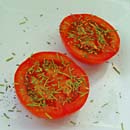
ESSENTIAL OILS AGAINST PAIN
Mint oil is used in many medical clinics in Europe to treat headaches, and has been proven to have positive results. Place 2 to 3 drops of this essential oil over the trigger points (the critical points where headaches begin, generally located on the forehead or frontal sinuses). Massage with the tips of your index and middle fingers for a few minutes in these spots.
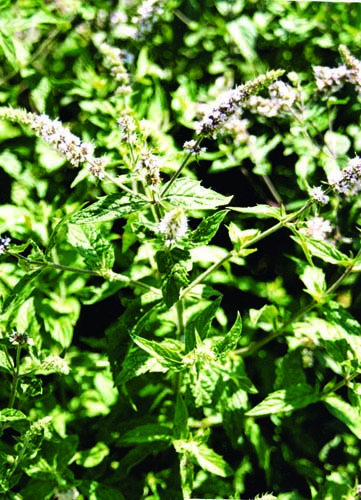
ESSENTIAL OILS FROM A TO Z
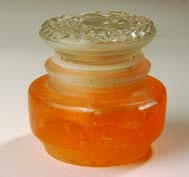
MARJORAM
Has an intense herbal aroma, reminiscent of almonds. This oil is a comforting and neural tonic, with pain relieving properties. It may stimulate local blood circulation and is used to treat headaches associated with tension in the neck, with stiff vertebrae. It doesn't present any side effects.
MINT
Refreshing perfume, great for relieving headaches caused by tension. It also helps to clear the head when you need to improve your mental concentration.
Safety. It should not be used by pregnant women or during breastfeeding. It is recommended to use diluted because it can irritate the skin.
WHITE WILLOW REMEDY FOR HEADACHES
- • White willow can be used as an infusion to relieve headaches, using 1 teaspoon of tender leaves in 4 cups of water. It's advised to drink 3 cups a day.
- • The leaves can also be used to make a decoction with 2 tablespoons dried white willow bark powder per 4 cups of water. Drink 3 glasses a day, before meals.
- • Warning. White willow bark has a high concentration of tannins, in some cases 20 percent, which can be harmful to the health if used as a prolonged treatment or in elevated doses.

White willow
(Salix alba)
- • Parts used. The leaves, roots and the bark are used and cultivated in the spring. The leaves and roots are used in infusions; the bark should be collected from stems only a few years old, which can only be used in powder form.
- • Grows in the wild, along rivers, streams, forests and in other humid environments.
- • Among its active components, salicin is the most important for its pain relieving, sedative, anti-rheumatic and anti-fever properties. Hypocrates prescribed remedies of white willow leaves to relieve many problems related to pain. Many ancient cultures used the leaves from this plant, which contain salicylic acid, to treat pain-related ailments.
- • White willow can be used as an alternative to an aspirin (acetylsalicylic acid). Many of aspirin's basic components are extracted from this plant, as with ulmaria, before 1890, when aspirin was synthetically produced.
- • The dose for average adults is 2 teaspoons dissolved in 1 cup of water once a day.
- • Warning. People who are allergic to aspirin or other similar medicines should not use white willow. It shouldn't be used on pregnant women or children.
TRANQUILIZING TEA
Boil 1 cup of water with linden flowers for a few minutes to make a tea. Drink 1 cup of this preparation, 3 times a day for headaches or for general tension.
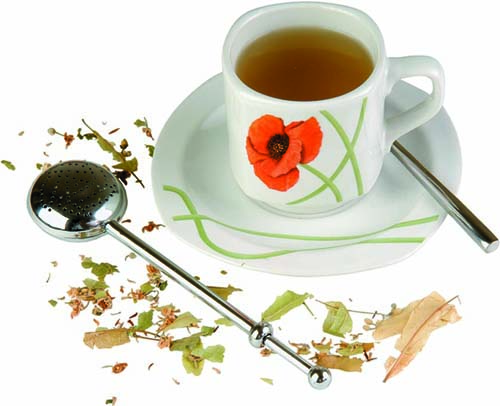
Linden
(Tilia sp.)
- • Parts used. The flowers, which properties are recommended for the nervous system, particularly for cases of stress or tension.
- • In ancient cultures it was said that linden flowers had a sedative and antispasmodic effect to treat epilepsy. It was believed that by placing a patient on a bed of linden flowers, epileptic attacks would be less serious.
- • Native to Europe, today this plant can be found all around the world.
- • It may be very effective for headaches, especially those caused by colds and bronchitis. Linden may be beneficial for the cardiovascular system, moderating blood pressure. Linden has gained recent fame for its ability to lower bad cholesterol related with clogged arteries.
- • Warning. It is not recommended using linden if you suffer from high blood pressure. When taken in high doses it can bring on insomnia.
ESSENTIAL OILS FROM A TO Z

NEROLI
This essential oil has a fresh, pleasant smell similar to orange flowers. It is a potent sedative, recommended for cases of stress and anxiety. Calms the nerves and helps to bring on sleep. It may help to relieve pains caused by tension, including headaches. It doesn't present any side effects.
OLBAS
This oil, extracted from olbas, a European herb whose curative properties were discovered in Switzerland 100 years ago, is mostly recommended to treat headaches. It stimulates blood circulation, opens the pores, generating warmth and overall well-being.
Valerian
(Valeriana officinalis)
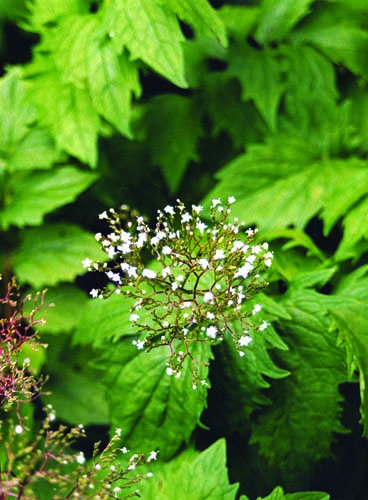

- • Parts used. The roots are prepared in infusions, tinctures, capsules and essential oils.
- • Native to Europe and Asia, usually grows on the edges of rivers and streams. Valerian leaves are fernlike. It has tiny flowers -white, pink or lavender- that bloom from late spring through summer. Its scientific name is believed to originate from the Latin word valere (health).
- • Valerian has a sedative effect, which makes it helpful for fighting headaches. It is recommended for insomnia and for excessive mental activity. It might also work for cases of high blood pressure, when combined with other herbs.
- • Warning. For some people this herb may have a stimulating effect, rather than a relaxing effect. If this occurs you should immediately stop taking valerian.
VALERIAN TO SOOTHE THE MIND
Take ½ cup of valerian decoction 2 times a day. For headaches and insomnia it's recommended taking 1 cup during the night. In tincture form, you can take up to 40 drops 3 times a day.
Vervain
(Verbena officinalis)
- • Parts used. The foliage (fresh and dried) is used to prepare infusions or to make tinctures and capsules.
- • Native to Europe and China. For centuries it was called the “sacred herb” and “cure-all”.
- • It is found wild in most of Europe, North Africa and in China and Japan.
- • Currently it is used specifically for its reconstructive qualities, to relieve stress and headaches caused by nervous tension. In Chinese medicine vervain is used to treat headaches related to the menstrual cycle.
- • Warning. If taken in excess, vervain can cause vomiting. It is not recommended for use during pregnancy.

NATURAL INFUSION
Add hot water (never boiling) to a teapot, along with a handful of fresh vervain leaves. Add honey and allow to sit for 10 minutes. Drink 1 cup regularly, especially after eating a lot. This may be particularly useful for women who suffer from headaches during their menstrual cycle.

ESSENTIAL OILS FROM A TO Z
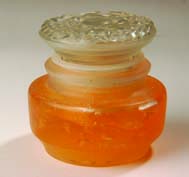
SAGE
Its herbal and almond aroma is perfect for relieving chronic headaches caused by excess tension. It helps to clear the mind, though in some people it can produce drowsiness.
Safety. Shouldn't be used during pregnancy.
SANDALWOOD
Suggestive and spicy perfume, which is helpful in fighting mental and physical exhaustion. It helps cure intense headaches, caused by stress. Favors introspection and meditation.
TEA TREE OIL
Its fresh and slightly spicy aroma, is ideal for relieving dizziness and headaches brought on by colds and flu.
Safety. It can be used on children over 2 years of age. Should be used in low doses and diluted because it can irritate the skin.

Comment about this article, ask questions, or add new information about this topic: